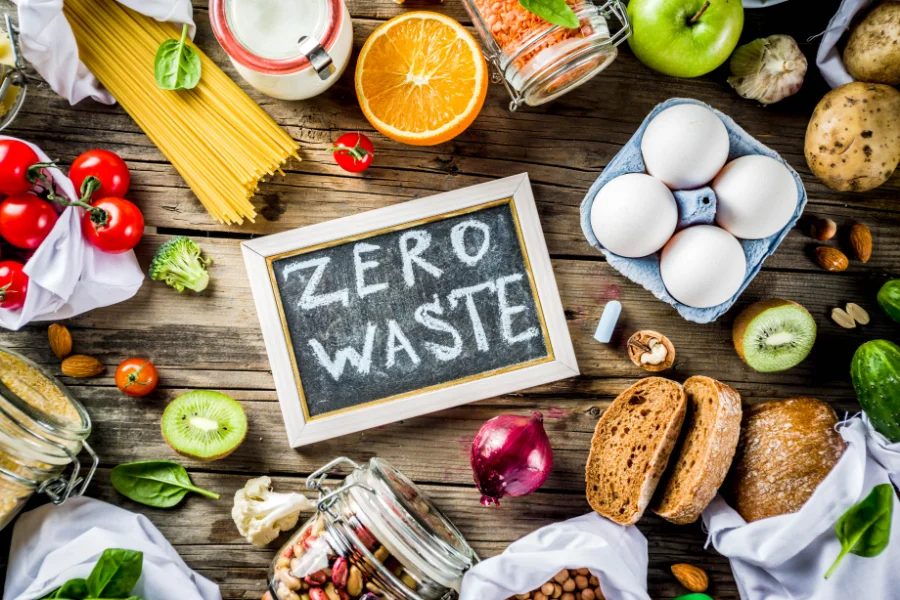
Corporate social responsibility (CSR) in the UK food and drink sector isn’t just about nice-to-have pledges—it’s increasingly about hard numbers, new legal duties, and practical ways to keep perfectly good stock out of the bin. Below is a clear, action-oriented playbook you can use right now to cut waste, recover value, and hit your sustainability goals.
The scale of the challenge (and opportunity)
-
The UK generates ~10.2 million tonnes of food waste each year across farms, manufacturing, retail, hospitality/food service and homes. Households are 58% of the total; manufacturing 13%; hospitality/food service 11%; on-farm 16%; retail 2%. wrap.ngo
-
In homes alone, 6.0 million tonnes were wasted in 2022 (about 88 kg per person)—which shows why upstream prevention and smarter redistribution matter so much. wrap.ngo
What UK policy expects from businesses in 2025 (England)
-
The Food & Drink Waste Hierarchy is now statutory guidance. You must prioritise prevention, then redistribution to people, followed by routes like animal feed, before any recovery/disposal options. GOV.UK
-
Separate collections are now law: By 31 March 2025, most businesses in England must arrange separate collections for food waste and core dry recyclables (glass, metal, plastic, paper/card). Micro-firms (<10 FTEs) have a grace period to 31 March 2027. GOV.UKLegislation.gov.uk
Voluntary frameworks shaping best practice
-
The Courtauld Commitment has been renamed the UK Food & Drink Pact, with the same 2030 goals (including halving per-capita post-farm-gate food waste, aligned to UN SDG 12.3). The Roadmap under the Pact gives a simple Target-Measure-Act model for businesses. wrap.ngo+1
The practical CSR playbook for food & drink businesses
1) Prevent surplus at source
-
Build a rolling demand/shelf-life view and set Targets, Measure waste by SKU/site, then Act with root-cause fixes (specs, forecasting, pack sizes, markdown rules). The UK Food & Drink Pact’s Food Waste Reduction Roadmap is your free blueprint. wrap.ngo
2) Redistribute edible surplus to people (first)
-
Follow the updated surplus redistribution guidance on date labels, handling and relabelling for safety; it was refreshed in Nov 2024 by WRAP, FSA and Defra. wrap.ngo
3) Choose the right commercial outlet when donation isn’t possible
a) Sell surplus food & drink (our speciality)
-
When you’ve got short-dated, overstocked or best-before-expired inventory, Refresh Surplus can purchase it rapidly and redistribute across compliant routes in the UK, Ireland and Europe—cutting waste, recovering cash, and improving your ESG story.
b) Animal feed (where legally permitted)
-
Former foodstuffs (e.g., certain bakery/dry goods), segregated and uncontaminated, can be diverted to animal feed under strict rules. See WRAP’s practical guide and animal-feed considerations. Always check ABP/feed legislation and keep audit trails. wrap.ngo+1GOV.UK
c) Energy recovery via anaerobic digestion (AD)
-
For unavoidable, non-edible organics, AD turns food waste into biogas/biomethane and nutrient-rich digestate (used as fertiliser). It’s a recognised recovery route under UK guidance, with quality specs (e.g., PAS 110) for digestate. GOV.UKwrap.ngo
4) Report transparently and improve continuously
-
Even where mandatory food-waste reporting hasn’t been introduced for large businesses (consulted in 2022; government response in 2023), measuring and publishing progress remains best practice—and it’s essential for the UK Food & Drink Pact. GOV.UKGOV.UK Assetswrap.ngo
How Refresh Surplus fits into your CSR goals
If you’re searching for “surplus food UK”, “FMCG stock clearance”, “sell surplus food and drink”, “buy surplus FMCG products”, or “earn from surplus inventory referrals”—you’re in the right place. We help brands, manufacturers, and retailers:
-
Reduce food waste and scope 3 emissions by routing stock to higher-value outcomes (redistribution first; compliant alternatives where needed). Aligns with the Food & Drink Waste Hierarchy. GOV.UK
-
Recover value quickly by selling excess inventory through a broker that understands date codes, labelling, batch control and route-to-market compliance.
-
Stay compliant with separate collections and the shift away from disposal, dovetailing with your local waste contracts and internal controls. GOV.UK
Quick reference (cited resources)
-
UK food waste is ~10.2 Mt across sectors; households remain the largest share. wrap.ngo
-
Household food waste was 6.0 Mt in 2022. wrap.ngo
-
Food & Drink Waste Hierarchy: prevent → redistribute → animal feed → AD/energy recovery → disposal (worst). GOV.UK
-
Separation duty (England): businesses must separate food waste & core recyclables by 31 Mar 2025; micro-firms by 31 Mar 2027. GOV.UKLegislation.gov.uk
-
UK Food & Drink Pact (formerly Courtauld): 2030 target to halve per-capita post-farm-gate food waste (aligned to SDG 12.3). wrap.ngo



